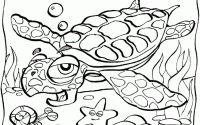Holiday Nutcrackers Christmas Decor Guide
History and Evolution of Holiday Nutcrackers

Holiday nutcrackers christmas decor – The evolution of the nutcracker from a simple tool to a beloved Christmas decoration is a fascinating journey reflecting changing cultural practices and artistic styles. Initially purely functional, nutcrackers gradually incorporated decorative elements, eventually transforming into the iconic, often whimsical figures we associate with the holiday season. Their journey reflects a blend of craftsmanship, tradition, and evolving aesthetics.
Origins and Early Development of Nutcrackers
The earliest known nutcrackers date back to the medieval period, primarily serving a practical purpose. These were typically simple, often wooden, devices designed solely to crack nuts. They lacked the elaborate ornamentation and artistic detail that characterize modern nutcrackers. The transition to their role as Christmas decorations began in the Erzgebirge region of Germany during the 19th century, coinciding with the burgeoning popularity of handcrafted wooden toys and ornaments.
Early examples from this period show a gradual shift towards more decorative designs, incorporating simple painted details and rudimentary figures.
Holiday nutcrackers are a cherished part of Christmas decor, adding a touch of whimsical charm to festive displays. For those seeking additional decorative options, consider complementing your nutcracker collection with festive wall art, such as the delightful designs available in christmas sticker wall decor. These stickers offer a versatile and easily customizable way to enhance your holiday ambiance, perfectly coordinating with your traditional nutcracker theme and creating a cohesive festive atmosphere.
Ultimately, the combination of these elements ensures a truly memorable Christmas.
Evolution of Nutcracker Designs and Materials
The evolution of nutcracker design is marked by a progression in both aesthetic complexity and the materials used. Early designs were predominantly simple, often featuring a single figure with minimal detail. Over time, nutcrackers became increasingly elaborate, incorporating intricate carvings, vibrant paintwork, and detailed costumes. The use of materials also diversified. While wood remained the primary material, other materials like metal, porcelain, and even composite materials were later incorporated, allowing for greater complexity and variation in design.
The iconic “king” nutcracker, with its tall stature and regal attire, emerged as a popular style, reflecting the region’s rich cultural heritage.
Timeline of Key Moments in Holiday Nutcracker History
| Era | Style | Material | Notable Features |
|---|---|---|---|
| Medieval Period (pre-1500s) | Simple, functional | Wood | Basic design, focused on nut-cracking functionality |
| 17th-18th Centuries | Slightly more decorative, but still primarily functional | Wood | Simple carvings or painted details might be present. |
| 19th Century (Erzgebirge, Germany) | Emergence of decorative nutcrackers as Christmas ornaments | Wood | Increasingly elaborate carvings, painted details, and simple figures. |
| 20th Century | Diversification of styles and materials | Wood, metal, porcelain, composite materials | Introduction of iconic “king” nutcrackers, mass production, and wider range of designs. |
| 21st Century | Contemporary designs and variations | Variety of materials, including new composites and plastics | Wide range of styles, including personalized and themed nutcrackers. |
Comparison of Traditional and Contemporary Nutcrackers
| Era | Style | Material | Notable Features |
|---|---|---|---|
| Traditional (19th-early 20th Century) | Mostly king or soldier figures, simple costumes | Primarily wood, hand-carved and painted | Simple, often rustic aesthetic; focus on craftsmanship |
| Contemporary (late 20th-21st Century) | Wide variety of styles, characters, and themes | Wood, porcelain, resin, metal, and other materials | Mass-produced and handcrafted options; diverse designs, incorporating pop culture and personalization. |
Nutcrackers in Christmas Decor and Displays

Nutcrackers, far from being mere nut-cracking tools, have evolved into beloved Christmas decorations, adding a touch of whimsical charm and festive spirit to holiday displays. Their rich history and intricate designs make them versatile pieces that can be incorporated into a wide array of decorative styles, from traditional to modern. This section explores the diverse ways nutcrackers can enhance your Christmas décor.
Incorporating Nutcrackers into Christmas Displays
The beauty of nutcrackers lies in their adaptability. They can serve as standalone focal points or be integrated seamlessly into larger displays. A single, majestic king nutcracker can command attention as a centerpiece on a mantelpiece, while a collection of smaller nutcrackers can create a charming village scene nestled amongst miniature Christmas trees and houses. They can also be strategically placed along stair railings, windowsills, or even draped from a Christmas tree, adding layers of visual interest to your festive arrangements.
Creative and Unique Nutcracker Displays
Beyond traditional arrangements, there are countless opportunities to showcase a nutcracker collection creatively. Consider themed displays, such as a “Nutcracker Army” marching across a shelf, or a “Nutcracker Orchestra” positioned around a miniature stage. You could also create a “Nutcracker Village,” complete with miniature houses and snow-covered landscapes, providing a captivating miniature world. For a more modern approach, display your nutcrackers on sleek, minimalist shelves or use them as unique ornaments on a modern, metallic Christmas tree.
The possibilities are as limitless as your imagination.
Nutcrackers in Different Christmas Decor Themes
Nutcrackers complement various Christmas décor themes effortlessly. In a traditional setting, wooden nutcrackers with classic designs fit seamlessly alongside evergreen garlands, red and green ornaments, and flickering candlelight. For a rustic theme, opt for nutcrackers with a weathered or distressed finish, placing them amongst pinecones, wooden accents, and burlap fabrics. In a modern setting, sleek, minimalist nutcrackers in metallic finishes or bold colors can add a touch of sophisticated whimsy, complementing a contemporary color palette of silver, white, and deep blues.
A Stunning Christmas Scene Featuring Nutcrackers
Imagine a scene bathed in the warm glow of fairy lights strung across a mantelpiece, draped with a garland of frosted pine branches and interspersed with sparkling silver ornaments. The centerpiece is a magnificent collection of nutcrackers, ranging in size and style, arranged on a plush, velvet cloth the color of deep burgundy. Larger nutcrackers, with intricately carved details and vibrant painted faces, stand proudly at the center, flanked by smaller nutcrackers, creating a dynamic and visually engaging display.
The color palette is rich and festive, incorporating the deep burgundy of the cloth, the emerald green of the garland, the silver accents of the ornaments, and the warm, golden tones of the fairy lights. The overall effect is one of opulent festivity, with the nutcrackers acting as the captivating focal point, drawing the eye and adding a touch of magical charm to the holiday scene.
Collecting and Appreciating Nutcrackers: Holiday Nutcrackers Christmas Decor
The world of nutcracker collecting offers a fascinating blend of history, artistry, and personal expression. From whimsical folk art pieces to exquisitely detailed handcrafted examples, these charming figures hold a unique appeal for enthusiasts worldwide. The value and desirability of a nutcracker are influenced by a variety of factors, making the pursuit of collecting a rewarding and often surprising journey.
Factors Influencing Nutcracker Value and Collectability
Several key factors determine a nutcracker’s value and desirability among collectors. Rarity is paramount; limited edition pieces or those from defunct manufacturers command higher prices. The age of a nutcracker also plays a significant role, with antique and vintage examples often fetching substantial sums. The maker’s reputation is another crucial element; renowned artisans and established brands hold considerable weight in the collector’s market.
Finally, the artistic merit and craftsmanship of the piece, including the detail of carving, painting, and the materials used, significantly impact its value. A nutcracker showcasing exceptional artistry and meticulous detail will naturally be more sought after. For instance, a rare, hand-carved nutcracker from a well-known German workshop dating back to the early 20th century would likely be far more valuable than a mass-produced, modern example.
Identifying Authentic and High-Quality Nutcrackers
Determining authenticity and quality requires a keen eye and a degree of knowledge. Examine the nutcracker’s construction; look for clean lines, well-proportioned features, and a sturdy build. High-quality nutcrackers are often made from durable materials like wood (often lindenwood) and feature intricate detailing. Authenticity can be verified by researching the maker’s marks, often found on the base or underside.
Comparing the nutcracker to known examples from reputable sources, such as museum collections or auction records, can also assist in verification. Beware of imitations; poorly made copies often exhibit sloppy craftsmanship, inconsistent paintwork, and inaccurate details. The presence of a certificate of authenticity from a reputable source is a strong indicator of a genuine and high-quality piece.
Caring for and Preserving a Nutcracker Collection
Proper care and preservation are essential to maintain the value and beauty of a nutcracker collection. Store nutcrackers in a cool, dry place, away from direct sunlight and extreme temperatures. Avoid placing them in areas susceptible to moisture or dust. Individual protective storage, such as acid-free tissue paper and soft cloth bags, can help prevent scratches and damage.
Regular dusting with a soft brush is recommended to remove accumulated dust and debris. Avoid using harsh chemicals or abrasive cleaners; gentle cleaning with a slightly damp cloth is sufficient. For more extensive cleaning or repairs, consult a professional conservator specializing in antique toys or wooden figures.
Resources for Holiday Nutcracker Collectors, Holiday nutcrackers christmas decor
Numerous resources exist to support and enhance the collecting experience. Online forums dedicated to nutcracker collecting offer a platform for enthusiasts to connect, share information, and seek advice. Auction sites, both online and physical, provide opportunities to acquire rare and desirable pieces. Museums specializing in folk art or toys often feature significant nutcracker collections, providing valuable insights into the history and artistry of these charming figures.
Specialized books and publications on nutcrackers also offer valuable information on identification, valuation, and care. Joining a nutcracker collectors’ club can offer a wealth of knowledge and networking opportunities.



